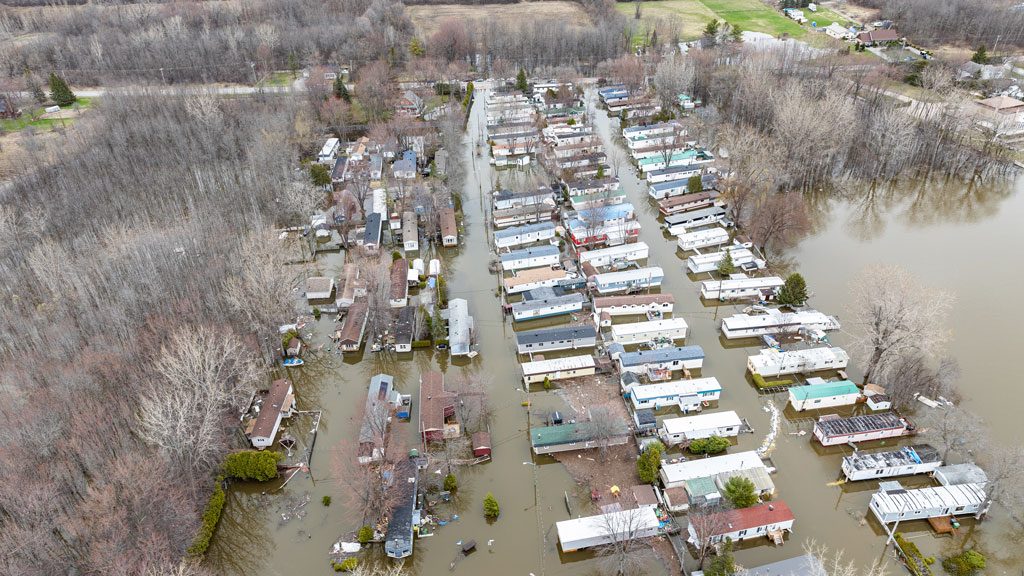More overland flooding as seen in B.C. and other parts of Canada is a future reality and will pose risks to existing and future properties, infrastructure and community plans as climate change causes sea and river water levels to rise and increases precipitation and storm events.
“Flooding is only going to intensify in coming years,” said Veronica Owens, a presenter at this year’s Buildex Vancouver and project manager, sustainability and energy for WSP Vancouver, where she has managed multi-disciplinary climate resilience and adaptation projects with local municipalities.
Projected climate data for 50-80 years forward exists and sustains the threat of more flooding in areas at risk, she said. “What is pretty critical to look at is how we are building today as these structures will be around for 75 years and be impacted directly by the future changes of climate change,” she said.
While that data is available, she said, it is not something that contractors and developers are readily incorporating in their building design and plans. One of the shortfalls in the system, she said, is when looking at flood risk either through building codes or local municipal requirements, these are often based on past historical data which established the standards for how and where to build. These standards may fall short of future needs.
“We know that historical data no longer applies. In the past we have had a stable climate — there is instability in the climate now,” she said, adding that scientific data collected based on emissions and weather changes realized are painting a new reality.
Owens said it is important that the construction and development industries look to this new projected data as it will impact all phases of construction from conception through to life of the building. It will also impact how municipalities view developments and their own infrastructure as well as the operational cost of buildings not designed to withstand the changes coming, insurance coverage, and “the vulnerable” or those people who must abandon their homes because of more and greater flooding.
“That’s a good question,” said Owens, when asked what level of government is responsible for ensuring that building standards reflect the coming impact of climate change. Owens said the provincial government maps flood plains and the municipalities provide construction standards, but the information provided may not be the most current.
It is this new projected data on flooding and its impact on the construction and development industries that Owens and associate Vincent Cormier will share at the Buildex session Resilience in the Built Environment and a Spotlight on Overland Flooding (W25) on Feb. 12 at the Vancouver Convention Centre West. Cormier is a lead hydro technical engineer for WSP’s Power Group in Western Canada.
Currently, B.C. relies upon dykes along rivers and the coastal areas as a main line of defence for rising waters. “Dykes can give a false sense of security,” he said, as occurred in Quebec where a dyke breach led to major flooding.
Cormier said there are lessons to be learned from the Quebec City suburb Sainte-Marie which has been heavily hit by flooding both in 2014 and twice in 2019 causing 200 residents to be relocated and homes to be abandoned.
However, a factory did not want to relocate its warehouse in Sainte-Marie area. Cormier said the project now underway is building resilience into that warehouse to sustain future flooding and he will discuss some of the options in making structures more flood-resilient.
While Quebec, Alberta (2013 major flooding of the Bow River), Saskatchewan (2019 flash flooding) have all been hit by flooding, so have B.C. points such as Prince George, Grand Forks, Chilliwack, Osoyoos, Mission and Delta.
Owens said that knowing how climate change data will impact precipitation and water levels will also help municipalities in preparing their own infrastructure to deal with an emergency situation such as flash floods as well as plan their resources so that municipal staff can respond.
The session by Owens and Cormier will include structural and non-structural mitigation strategies and adaptive measures for high-risk developments as well as understanding when to retreat from an area.











Recent Comments
comments for this post are closed